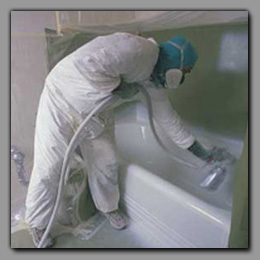Today’s post comes from guest author Jon Gelman from Jon Gelman, LLC – Attorney at Law in New Jersey. Unfortunately, I think we have seen too many articles about the problem of not having proper ventilation or respiratory protection. This happens in so many industries, including agriculture. And realize that it’s most likely a much bigger problem, because the articles only result from those who die or get hurt from this practice, not workers who face these challenges every day. It is so important for companies to provide their employees with the information, knowledge, and safety equipment needed to carefully do their jobs.
University of Iowa, College of Public health, recently reported the death of a bathtub refinishing technician who died from the inhalation of paint stripper vapors.
The apartment manager and first responders reported a strong chemical odor in the second story apartment.
In 2012, a 37-year-old female technician employed by a surface-refinishing business died from inhalation exposure to methylene chloride and methanol vapors while she used a chemical stripper to prep the surface of a bathtub for refinishing. The technician was working alone without respiratory protection or ventilation controls in a small bathroom of a rental apartment. When the technician did not pick up her children at the end of the day, her parents contacted her employer, who then called the apartment complex manager after determining the victim’s personal vehicle was still at the refinishing company’s parking lot. The apartment complex manager went to the apartment unit where the employee had been working and called 911 upon finding the employee unresponsive, slumped over the bathtub. City Fire Department responders arrived within 4 minutes of the 911 call. The apartment manager and first responders reported a strong chemical odor in the second story apartment. There was an uncapped gallon can of Klean Strip Aircraft® Low Odor Paint Remover (80-90% methylene chloride, 5-10% methanol) in the bathroom. The employee’s tools and knee pad were found in the tub, suggesting the employee had been kneeling and leaning over the tub wall to manually remove the loosened original bathtub finish coat.
The factors contributing to this lethal exposure include use of a highly concentrated methylene chloride chemical stripper having poor warning properties (“Low Odor”); working in a small room without local exhaust ventilation to remove chemical vapors or provide fresh air; and working without a respirator that could have protected the employee from exposure.


